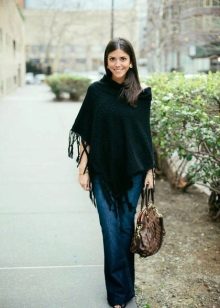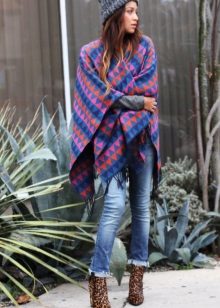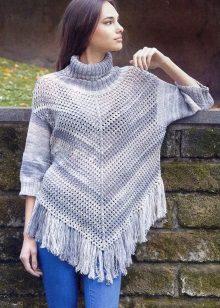Features
Traditional mexican poncho it is a rectangular piece of fabric measuring 1.5 by 1.5 or 1.5 by 2 meters, in the middle of which a square is cut for the head. The very word “poncho” means “blanket”.
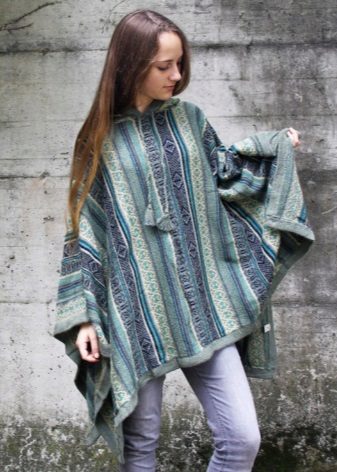
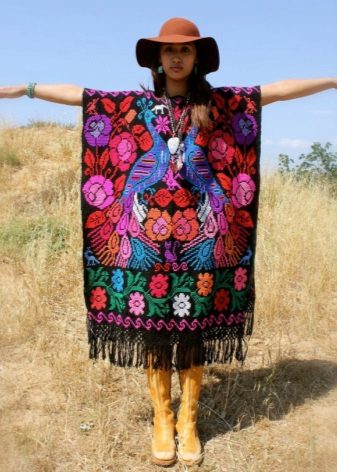
For a long time this product was made of dense heavy wool and really strongly resembled a blanket thrown over the shoulders, from which, most likely, it happened. Both women and men wore the poncho. Most Latin American countries have their own poncho options.
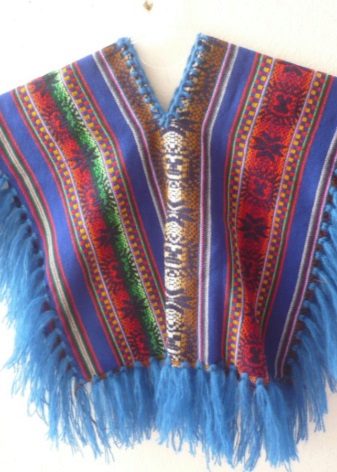
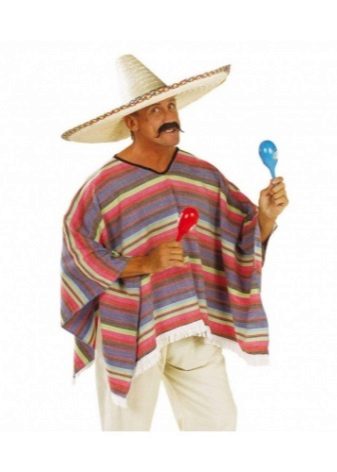
Previously, residents of various Mexican provinces wove their own, characteristic only for their area, geometric patterns saturated with bright colors, from which they encrypted mythological plots, stories about the most important events in the history of the tribe, and images of predatory animals.

Models
Today, an ordinary piece of rectangular fabric has become more than just a traditional piece of clothing for South American Indians. Poncho has turned into fashionable stylish clothes with a wide variety of models, styles, materials, textures, drawings, patterns and prints. The only thing that has remained unchanged over the centuries is the presence of a mandatory cutout for the head and the absence of even a hint of sleeves.
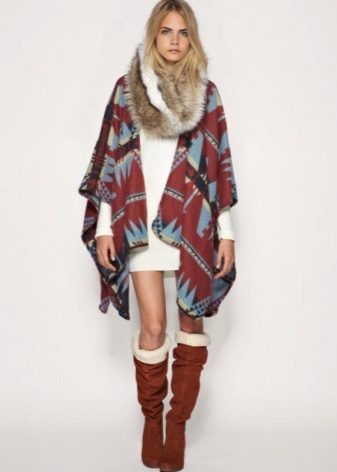
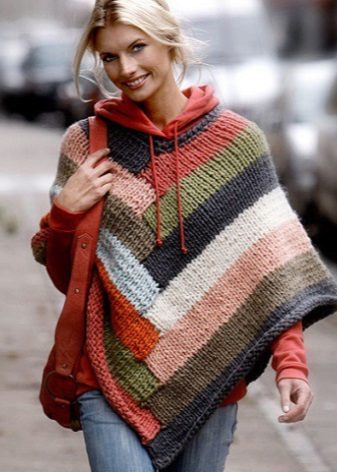
With the help of various ponchos and wraps you can diversify any wardrobe. The Mexican-style poncho is quite popular today, because it is a vivid representative of the so-called boho-chic. This style, filled with simple silhouettes and ethnic motifs, involves the use of natural materials and dyes. And the Mexican poncho fits perfectly into fashion standards.
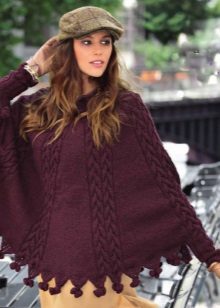
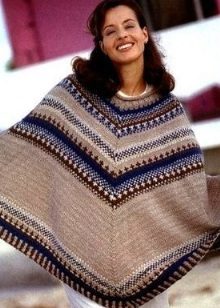
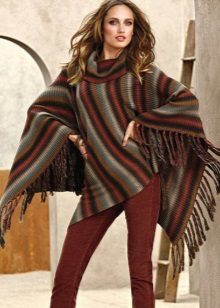
In the 60s of the last century, due to the growing popularity of the hippie movement, the poncho gained a second wind and became, along with flared trousers and “gypsy” skirts, the favorite clothes of representatives of the “progressive” youth of that time. Only one decade passed, and the Mexican poncho began to enjoy great success with housewives and needlewomen. At that time there was a craze for knitting, but where to start if not with a rectangular piece of canvas with a hole in the middle?
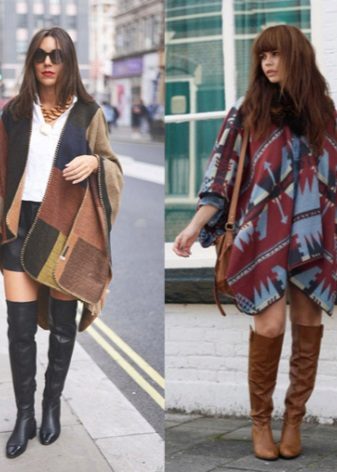

Over time, a simple cut diversified. The needlewomen knit openwork poncho in the form of a shawl, a poncho-sweater with braids, a poncho-vest in a Christmas tree, a narrow poncho on the chest, which is an alternative to the stole, a long poncho that replaces the demi-season coat and other no less interesting models.
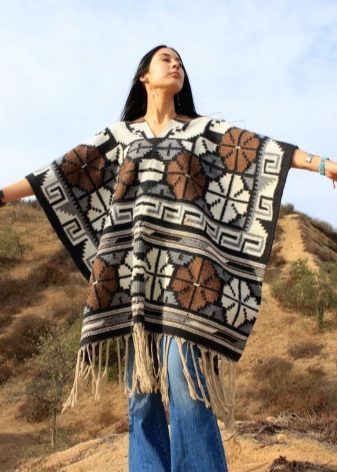

Brushes, fringe, small pompons, braid - these are just a small part of the favorite poncho finishes available in the arsenal of modern knitters.
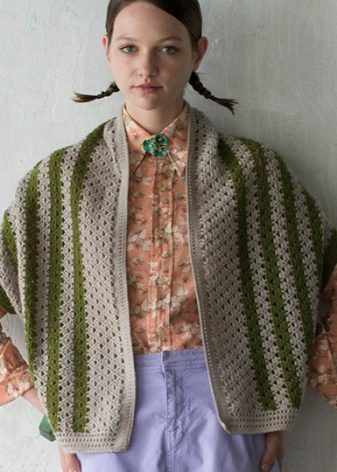
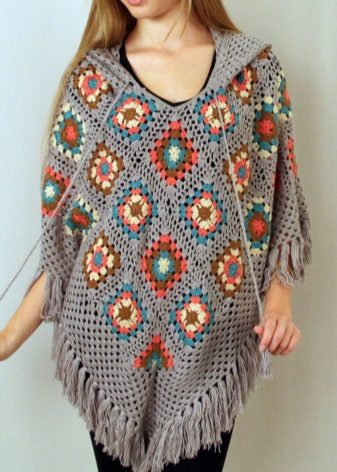
Fabrics
Traditionally, the manufacture of poncho from the best and most expensive alpaca and vicuna wool was the lot of male weavers, while the coarser, casual clothes for the poor were made of llama wool by women. Now the use of manual labor and natural woolen materials has become optional, more and more ponchos and wraps are made industrially from knitwear, cotton, linen, silk and even nylon and fleece.

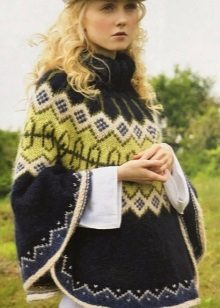

A poncho, or rather a cloak, can be sewn from light fabric, then it can be put on a swimsuit instead of a pair. Knitted from yarn manually or machine poncho will replace a pullover, sweater or vest. A heavy poncho made of woolen coats will be an excellent alternative to the already orderly fed-up demi-season coat.
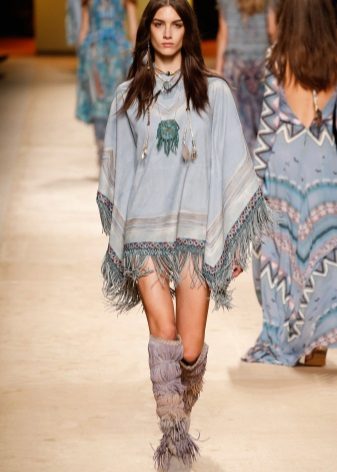

What to wear
In Mexico itself, a poncho is usually worn with long white shirts and white trousers. If you decide to create an image in ethnic style, then the Mexican poncho can be supplemented with tight pants, cowboy boots or “timberlands” and massive national jewelry. A bulk bag made of natural materials, for example, jute, will be quite appropriate in this ensemble. The characteristic hat of the Mexicans - sombrero did not particularly take root in the European wardrobe, however, it will be quite appropriate at a carnival or a costume ball.


A poncho cape will work well with light blue skinny jeans and high heel shoes. Bold fashionistas can combine a poncho or a light cape with an ethnic pattern with flared trousers that are back in fashion and high wedge shoes. A wide-brimmed hat will add to the image a share of adventurism.
